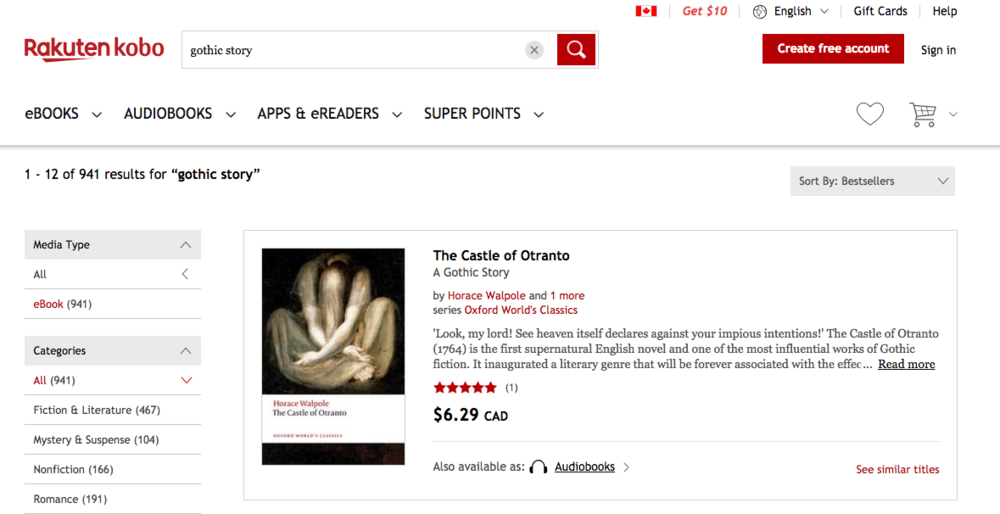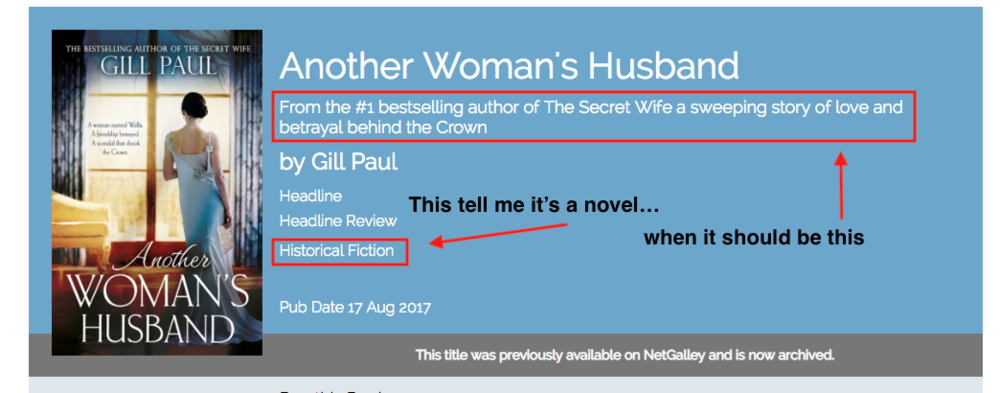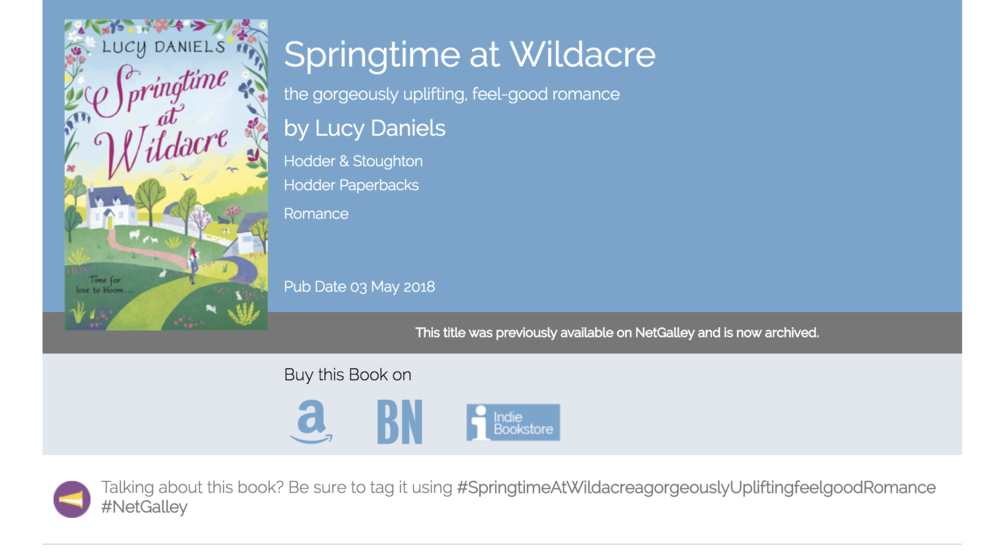ICYMI: BookNet Canada has set a target deadline of August 28, 2020 for all Canadian data providers to be able to send a full ONIX 3.0 feed. To help the industry accomplish this goal and to support a well-rounded ONIX education, BookNet Canada is highlighting essential resources and publishing on the BNC blog. We’re also revisiting some essential posts from years past, including this gem, originally published to the BNC Blog in September 2018. We’ve presented an edited version below.
There's a marketing trend sweeping the nation(s) and it can be described in one word: terrible. Maybe you've seen it and it's also made your skin crawl? Often captured in the wild, here’s a recent sighting on Amazon for Colette McBeth’s An Act of Silence:
A promotional header being misappropriated as a subtitle. For “A gripping psychological thriller with a shocking final twist” is a promotional heading, not the book’s actual subtitle.
Digital marketing is an evolving art form, one that typically rewards ingenuity and innovation. But there’s a big difference between creative data handling and brazen mishandling of data.
Subtitles
Subtitle is a wonderful metadata field that allows you to provide additional information about your book. The field is completely optional, but including one can often:
add additional context that positions your book;
boost discoverability (if properly tagged); and
allow your main title to be more artistically adventurous.
A subtitle should be concise, informative, and factual. Like The Castle of Otranto with its subtitle “A Gothic Story” as listed on Rakuten Kobo:
A subtitle should not be that of “Another Woman’s Husband,” as it appears on NetGalley:
The subtitle is listed as “From the #1 bestselling author of The Secret Wife a sweeping story of love and betrayal behind the Crown.” A promotional header in subtitle’s clothing.
As the adage goes: metadata is marketing. So let’s use that “subtitle” in search. When you look up "From the #1 bestselling author" Another Woman's Husband doesn't even come up as the top search! More importantly, the reader starts asking questions. Which Crown? What country? What era? Fact or fiction?
This use case circumvents the intended application of the subtitle field in two ways:
A subtitle should answer questions, not create more.
A subtitle should always match what appears on the book cover and/or title page.
An Act of Silence and Another Woman’s Husband are only two of many examples. Why is this happening? Are marketing staff switching out subtitles with promotional headlines to take advantage of their prominent placement on retailer platforms?
First, let’s look at promotional headlines and their intended application.
Promotional headlines
A promotional headline is a hook, catchphrase, or brief sentence that's meant to stick in a reader's head and propel them towards your book. Properly laid out, subtitles and promotional headlines can work in harmony, for example, Debbie Macomber’s Alaskan Holiday, as displayed below on BNC CataList
Alaskan Holiday: A Novel. Promotional headline: “Debbie Macomber brings us to the Alaskan wilderness for a magical Christmas tale about finding love where it's least expected.”
The subtitle primes your reader for the book; the promotional headline pulls them towards it. When mishandled, it becomes messy, as with Springtime at Wildacre, as seen on NetGalley with the subtitle “the gorgeously uplifting, feel-good romance.”
Springtime at Wildacre may in fact be gorgeous, uplifting, and make the reader feel good, but that's a subjective statement. As far as subtitle offenders go, it's not the worst, but the real issue is what can happen when that promotional headline is attached to the title by putting it in the subtitle field. See how NetGalley combines the title and subtitles fields to create a unique hashtag, #SpringtimeAtWildacreagorgeouslyUpliftingfeelgoodRomance:
That hashtag is more or less an entire tweet! Normally, you'd see something like this if the information supplied in the bibliographic data was misattributed, as in the case of a promotional headline being tagged as a subtitle. To avoid this, you need to make sure your subtitle and promotional headline are properly indicated in ONIX:
<TitleDetail>
<TitleType>01</TitleType> ← List 15, 01 (Distinctive Title)
<TitleElement>
<TitleElementLevel>01</TitleElementLevel> ←List 154, 01 Distinct title of book (product)
<NoPrefix/>
<TitleWithoutPrefix>Springtime at Wildacre</TitleWithoutPrefix>
<Subtitle>A Novel</Subtitle>
</TitleElement>
</TitleDetail>
One of the reasons publishers often switch out subtitle for promotional headline is because they're trying to call it out separate it from the description. But you can already do this! Instead of doing a lot of formatting to make this sentence the bolded first sentence of your book description (which takes a lot of HTML-ing), you can simply give it its own spot and let it stand on its own two legs. You never know where it will end up (but in a good way, not a "do you know where your marketing headline is?"). Let’s look at the ONIX:
<TextContent>
<TextType>10</TextType> ← List 153, promotional headline
<ContentAudience>00</ContentAudience> ← List 154, unrestricted audience
<Text>Love is in the air in the little village of Welford...</Text>
</TextContent>
Here’s how BNC CataList will display your metadata:
Isn’t it great when there’s a place for everything and everything is in its place?
Bonus round: Keywords!
While we're discussing ONIX, there’s something else that should always be supplied: keywords. Keywords are freeform text separated by semicolons and are intended to make your books appear in searches. It's strongly recommended that you DO NOT simply divide your title (e.g., springtime; at; wildacre) as titles are already searchable on nearly every platform and listing the words again as keywords wastes prime real estate. Instead, provide common words that relate to the content of your book. For example:
<Subject>
<SubjectSchemeIdentifier>20</SubjectSchemeIdentifier> ← List 27, 20 (Keywords)
<SubjectHeadingText>Romance; Novel; dogs; village; cottage; Hope Meadows; gorgeous; feel-good;danger; friendship; animal; yorkshire; johnson; debbie; debbie johnson; veterinary</subjectHeadingText> ← list the most important keywords first as many retailers only take the first 3-5!
</Subject>
Keywords aren't meant to be displayed; they're the linguistic links that draw your content to the surface. You can read more about how online retailers are using keywords on our blog.
Subtitles are not keywords, but they’re usually indexed, which boosts the discoverability of your book because they specify the subject matter. This is why using the subtitle's designated field to drop in a tagline or promotional heading is not ideal. If anything, general statements tend to push your rankings down. Imagine how many books come back if you input "new, gripping" into a retailer's search engine…
Everything has its place
ONIX is beautiful. There's a place for everything and everything has its place (more or less, but that's what updates are for!). Retailers, wholesalers, library systems: they all map their systems to pull specific information from where it ought to be, not where it was snuck in. Playing fast and loose with your bibliographic information is not expressing a creative solution. It's muddying up search and display for end-users, ecosystems you cannot control. And you can also create more work for marketing teams in the long run -keeping metadata fresh enough to pass validation is hard enough!
So, please, don't sacrifice subtitles and replace them with marketing-type descriptions. Subtitles are delightful, useful, and methodical pieces of bibliographic information that allow us to understand what a book is about.
And, in case you’re wondering, you’re not going to find a sympathetic ear in the ONIX for Books Best Practices Guide:
And of course, to maintain this semantic precision, senders should never put data into a field just because they want it displayed in a particular way by a specific recipient (for example putting a publisher name into a series or collection title field, or promotional text into a subtitle, so that the recipient displays it more prominently).
To stay up-to-date on all ONIX 3.0 transition news and information, subscribe to our weekly eNews or nab the RSS feed.





















Insights into the latest updates and additions made to ONIX codelists.